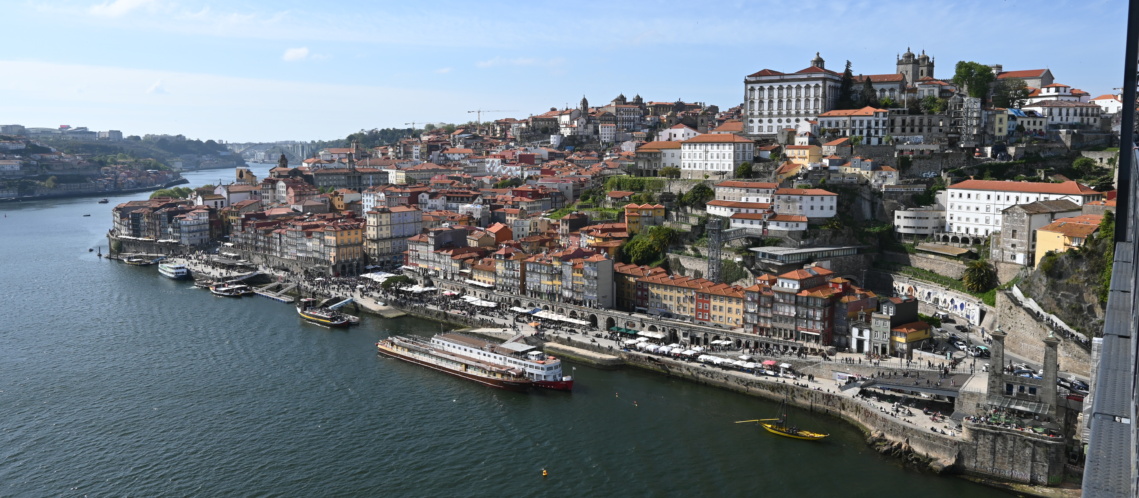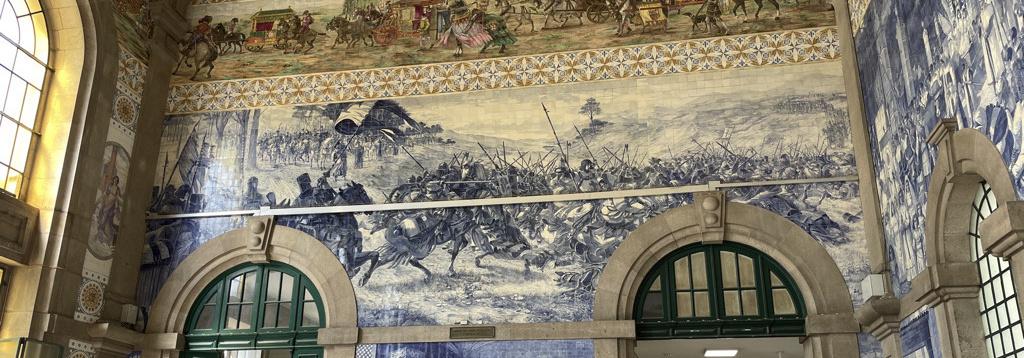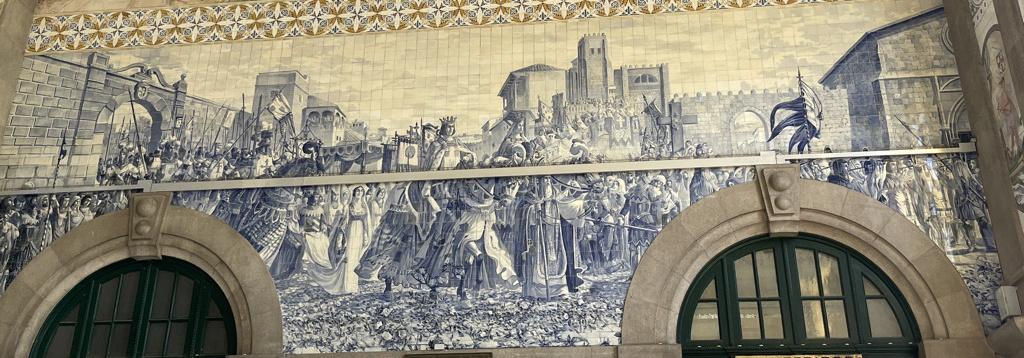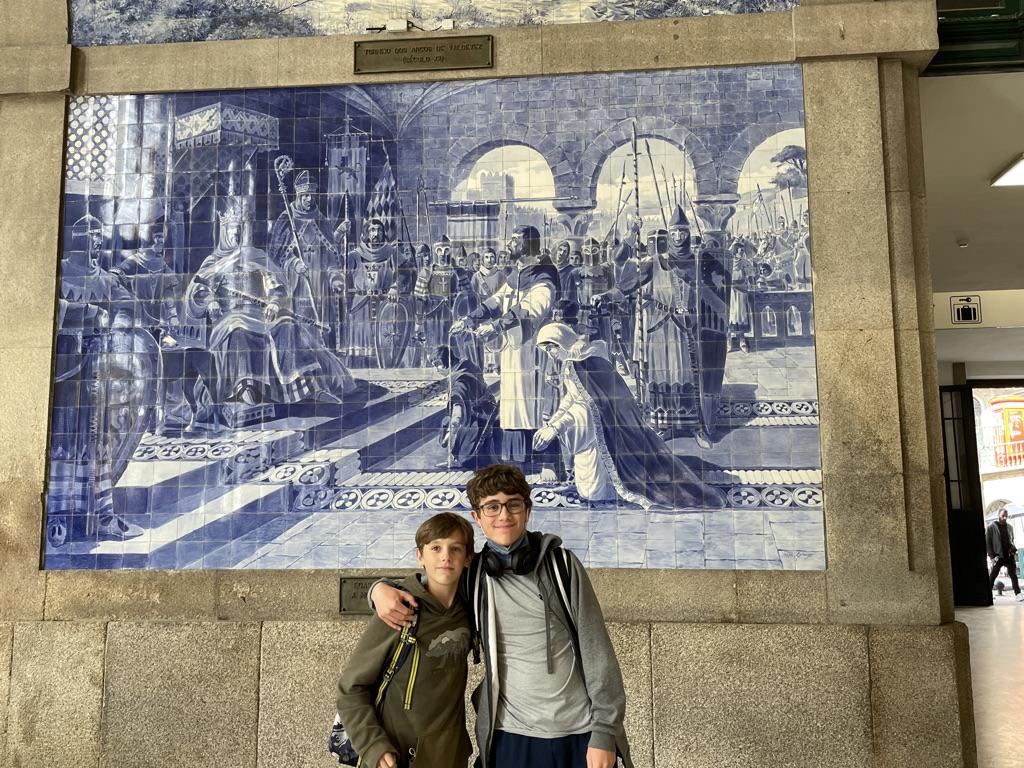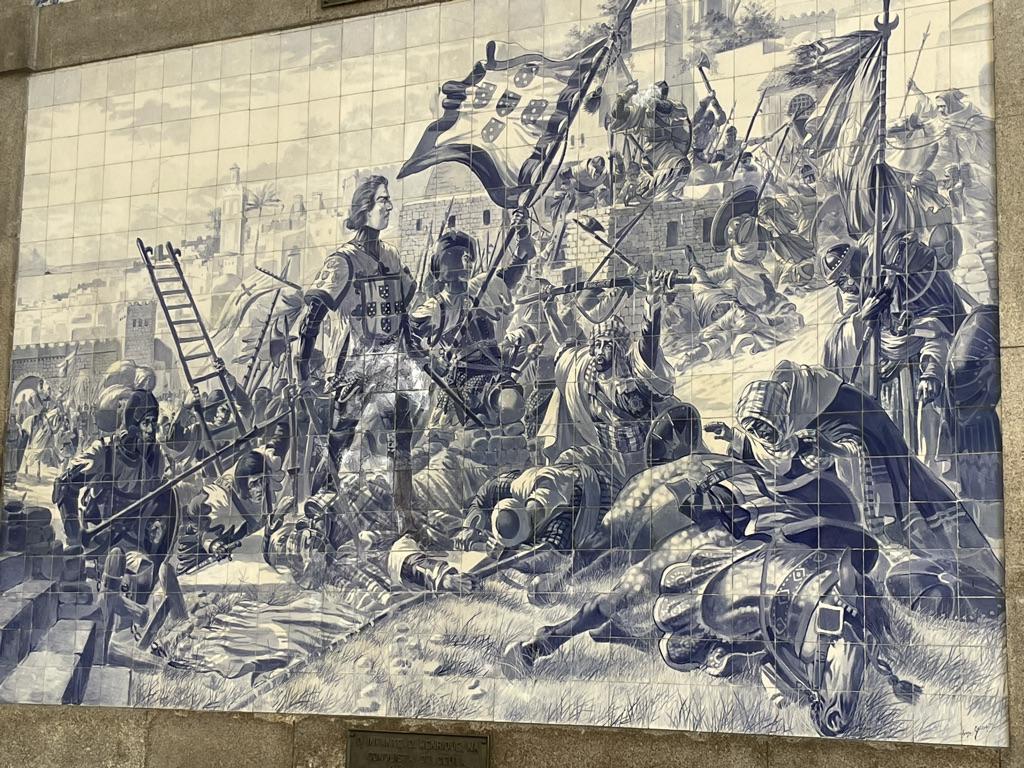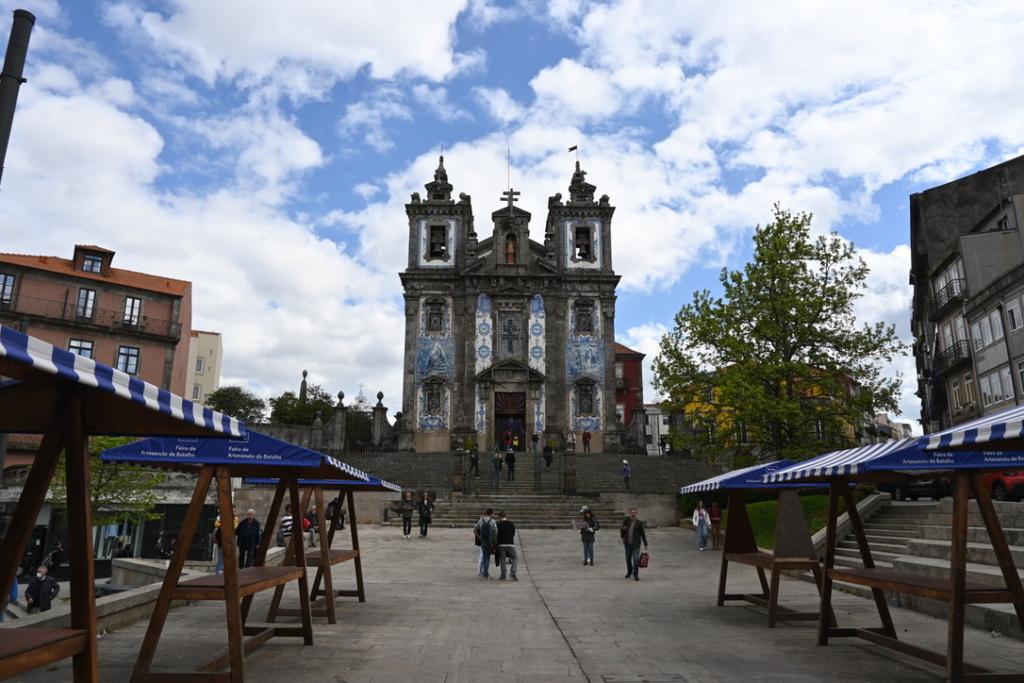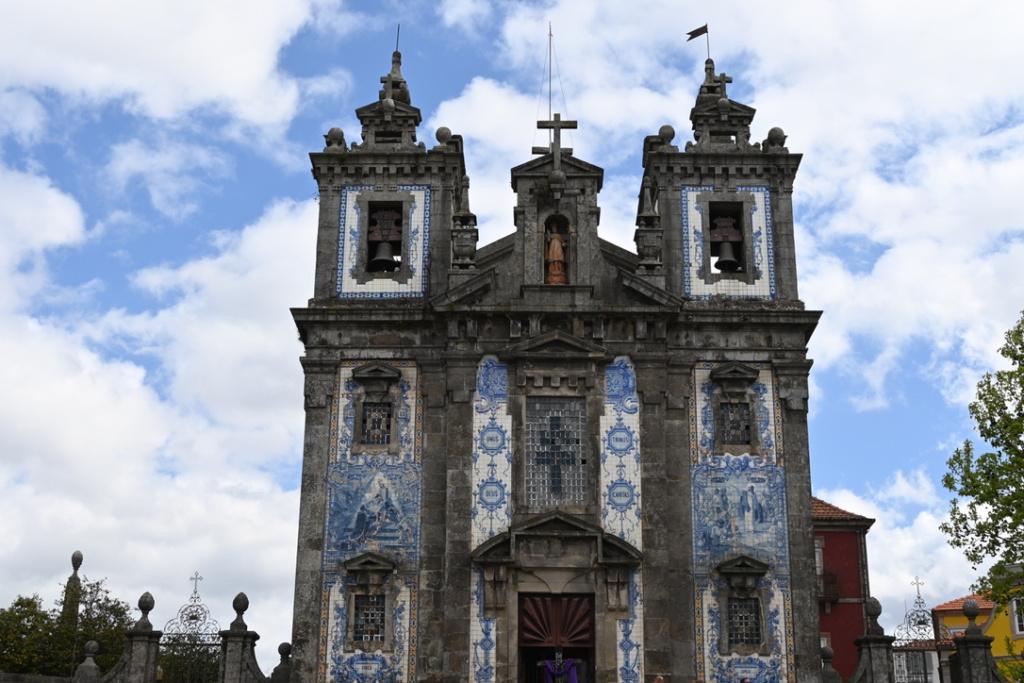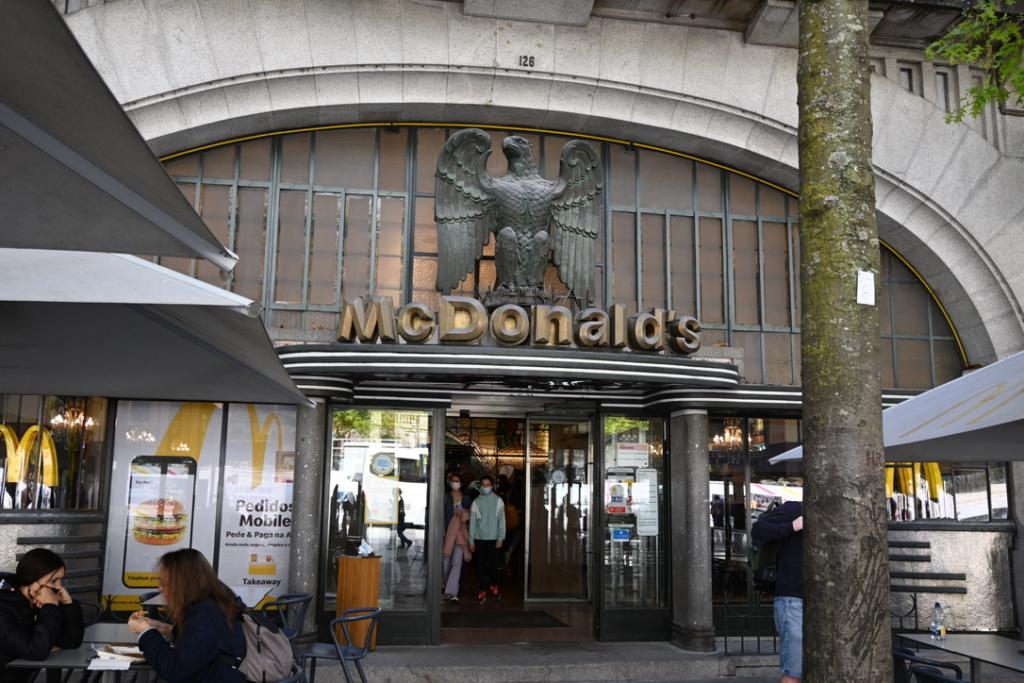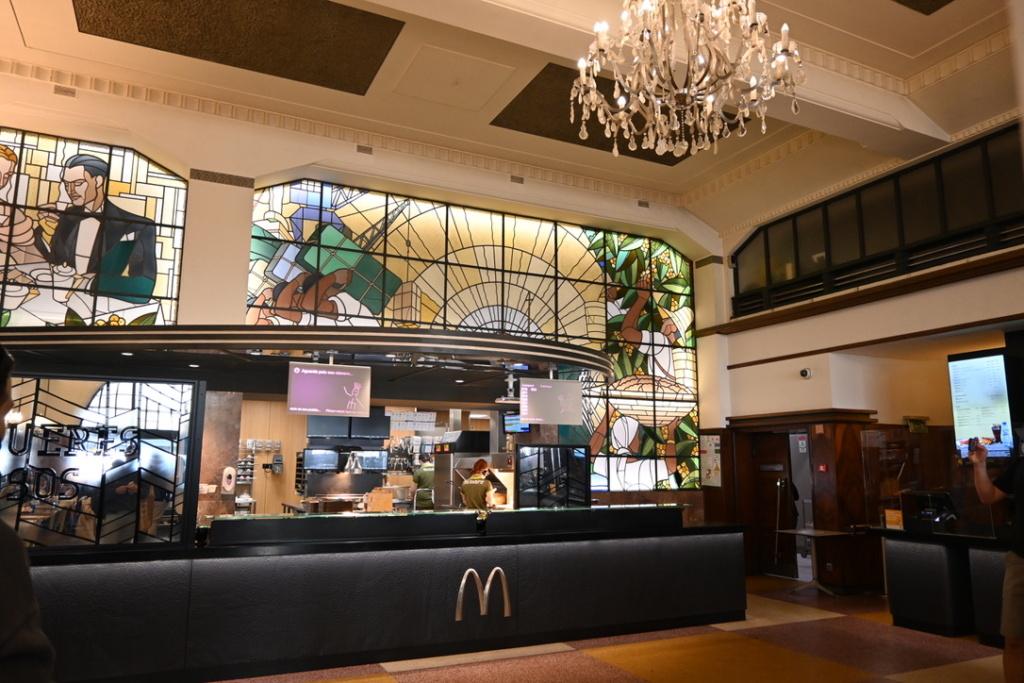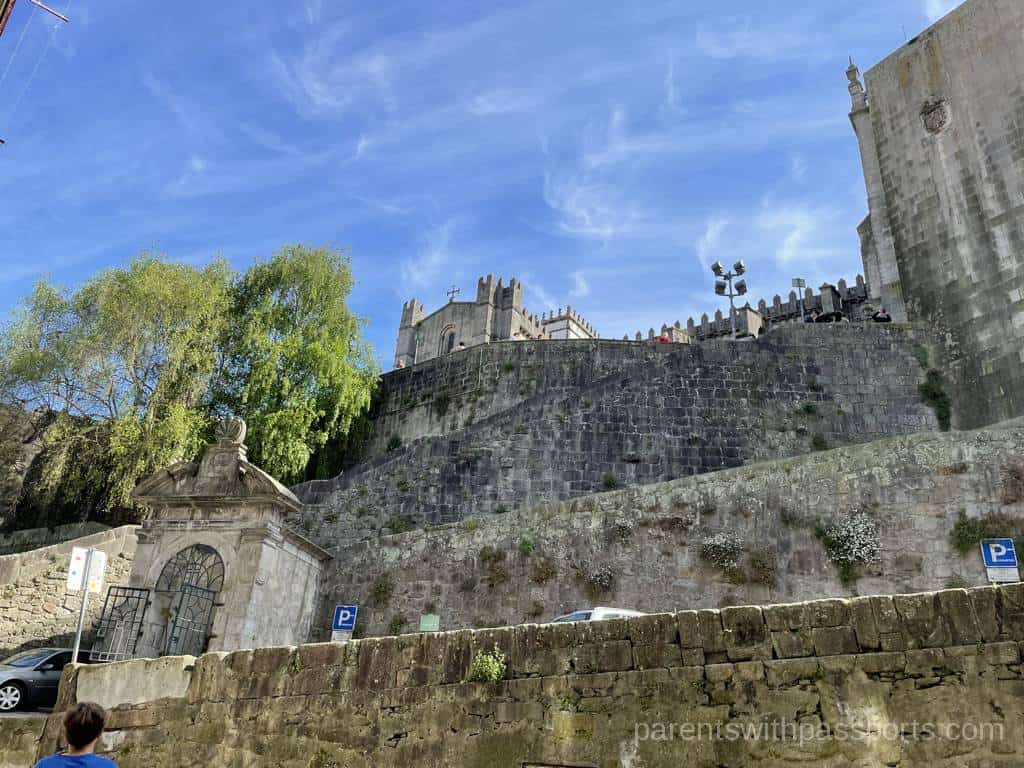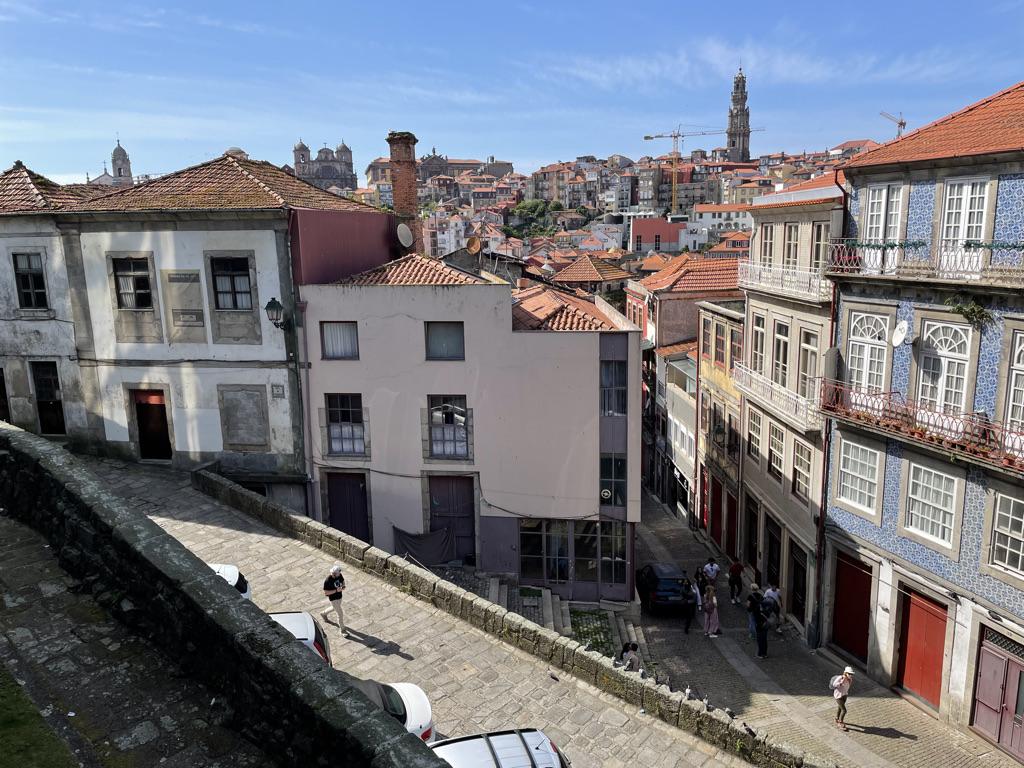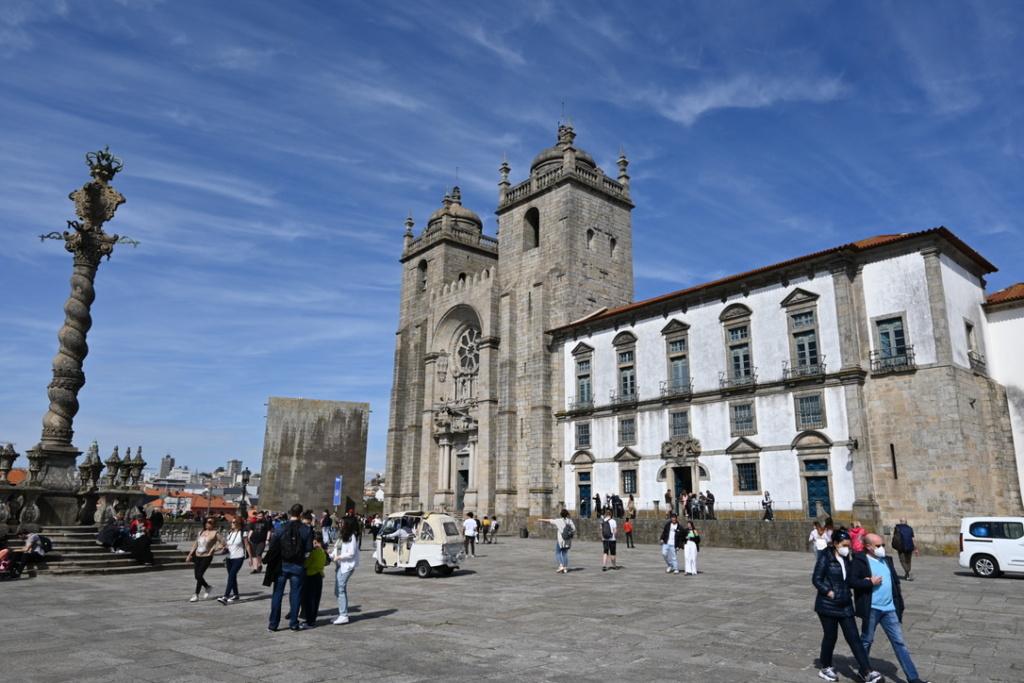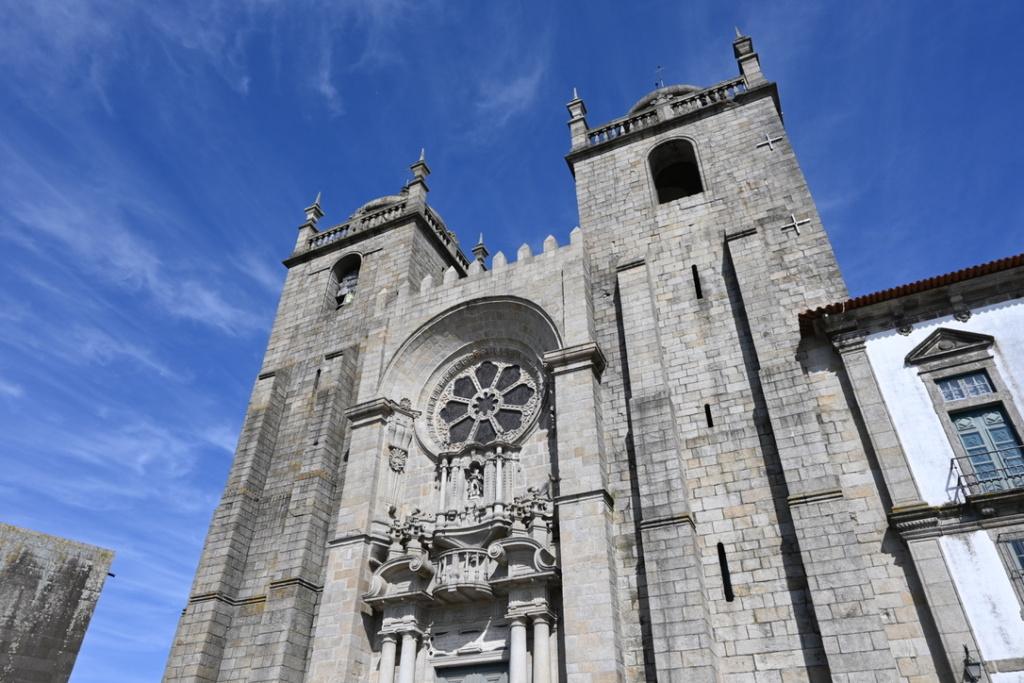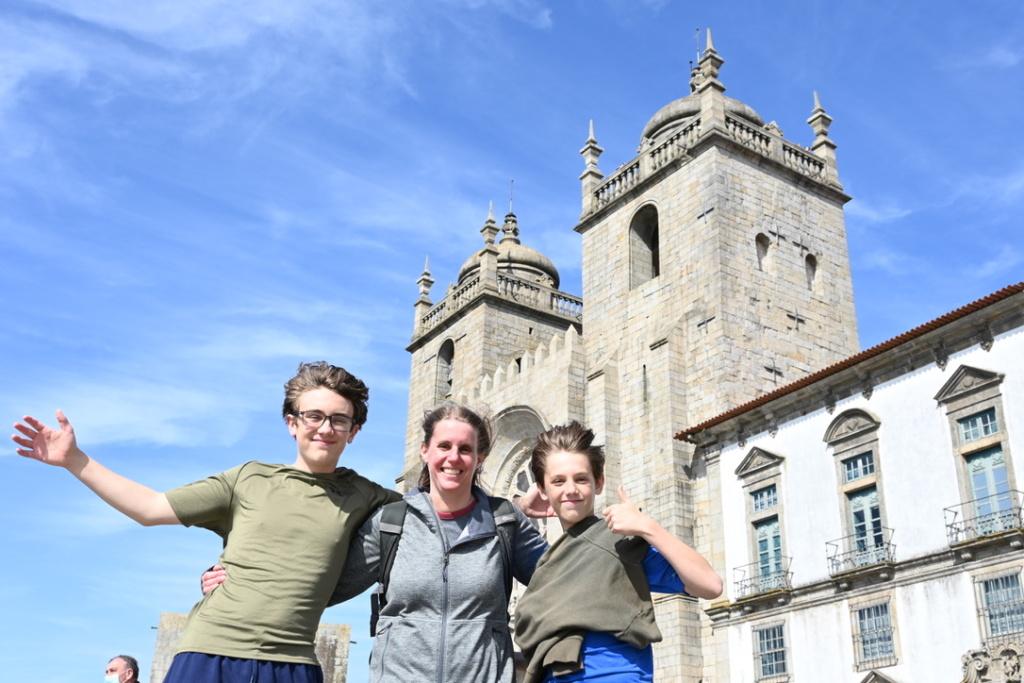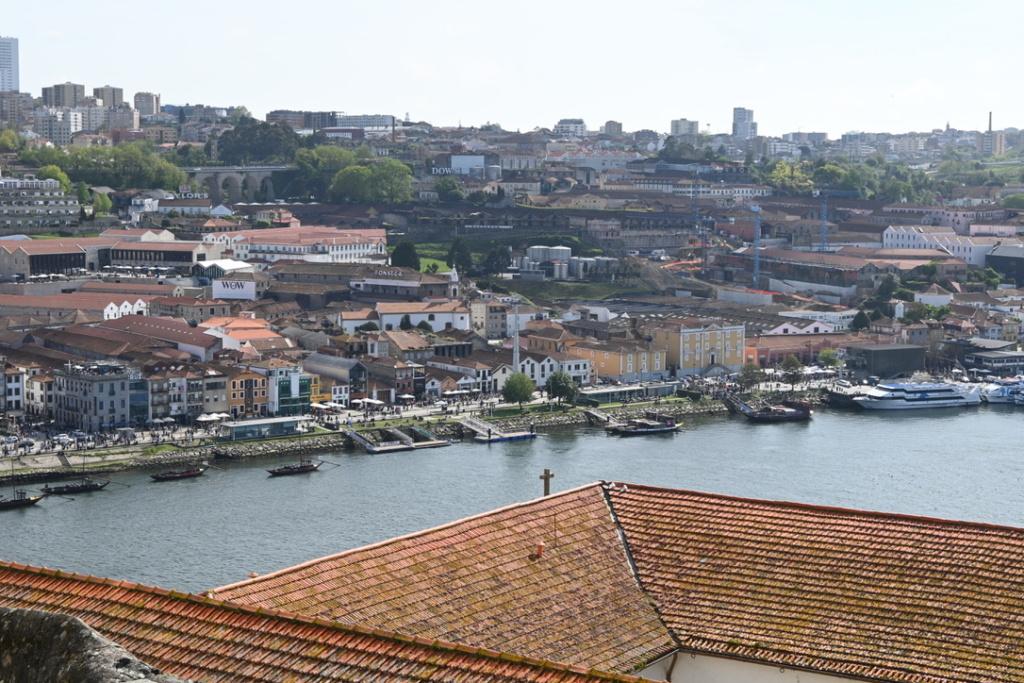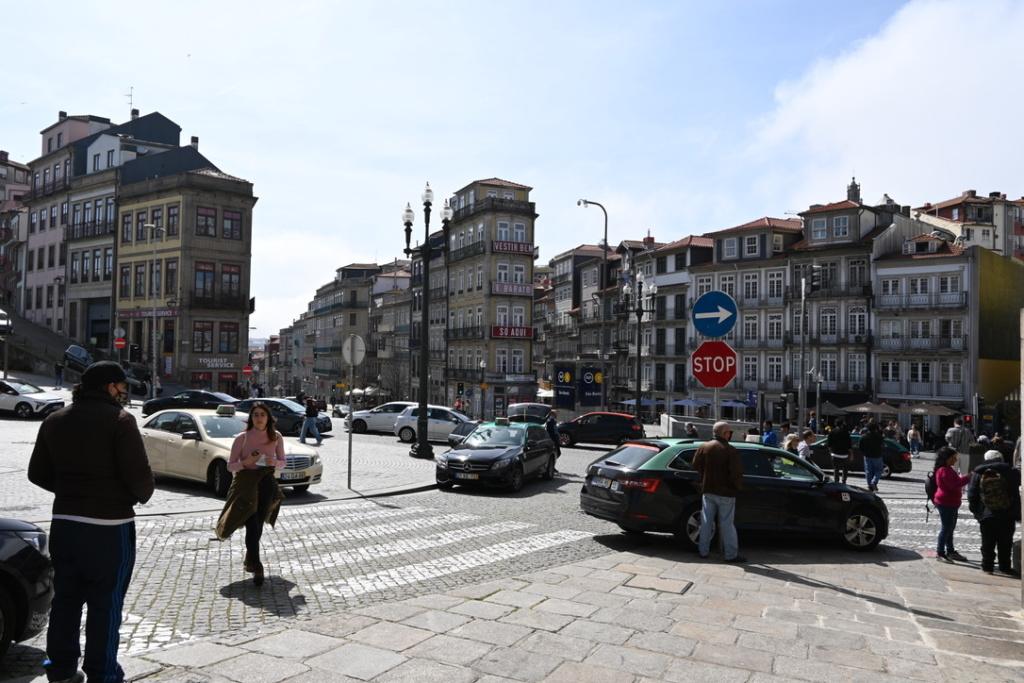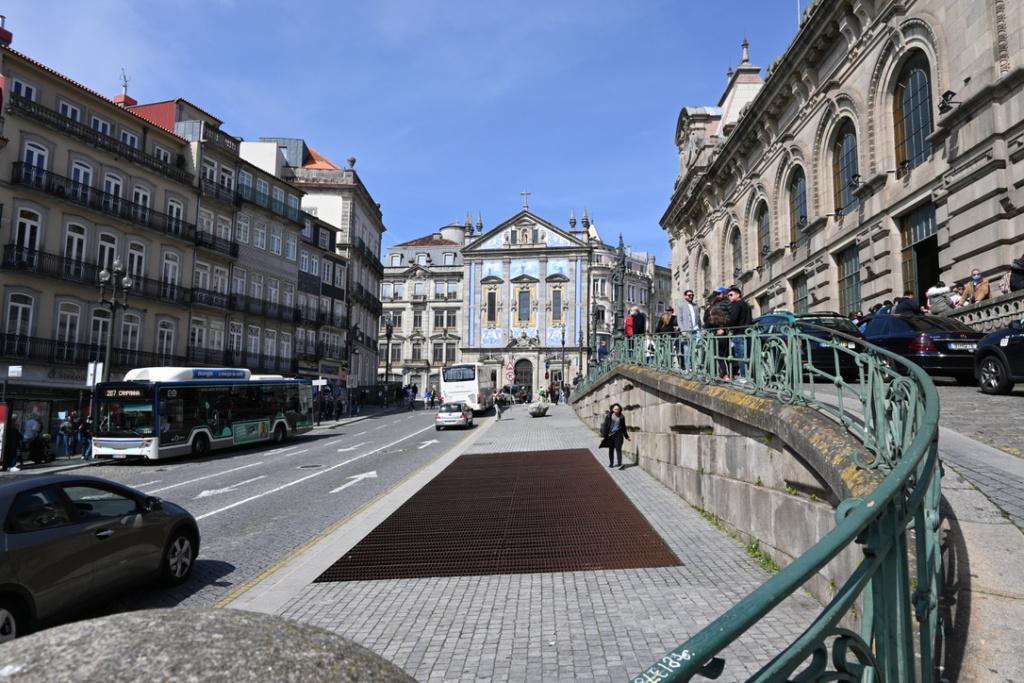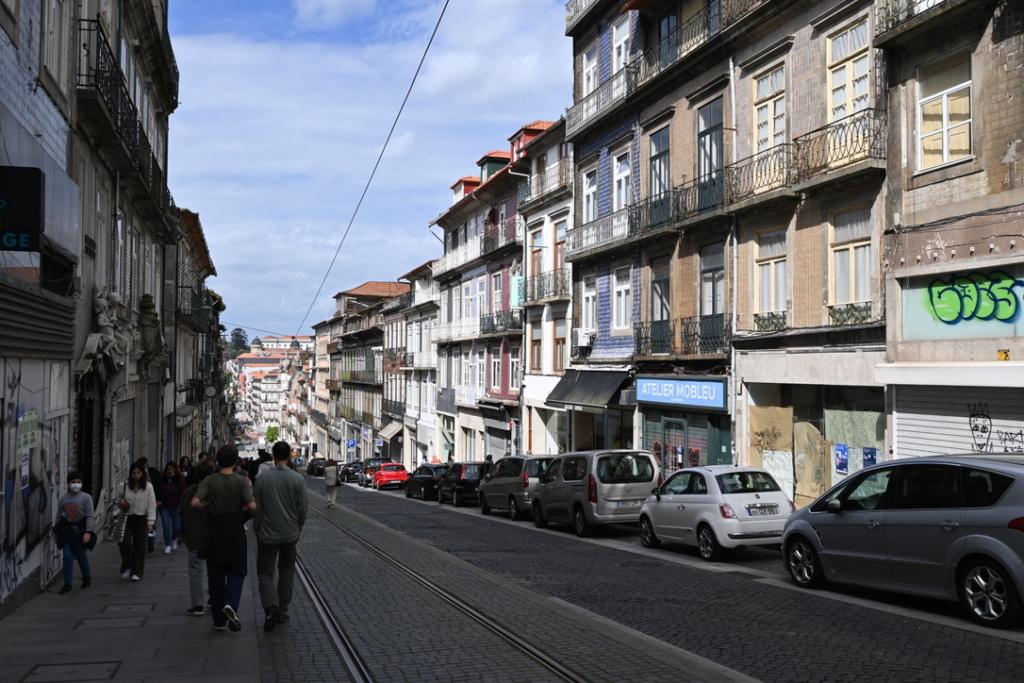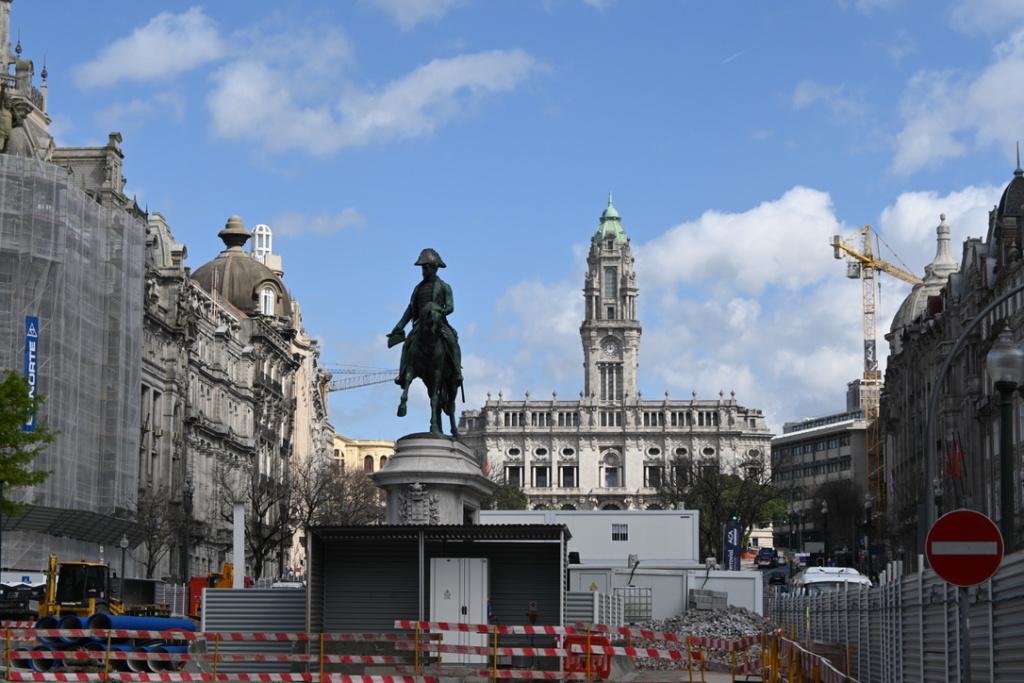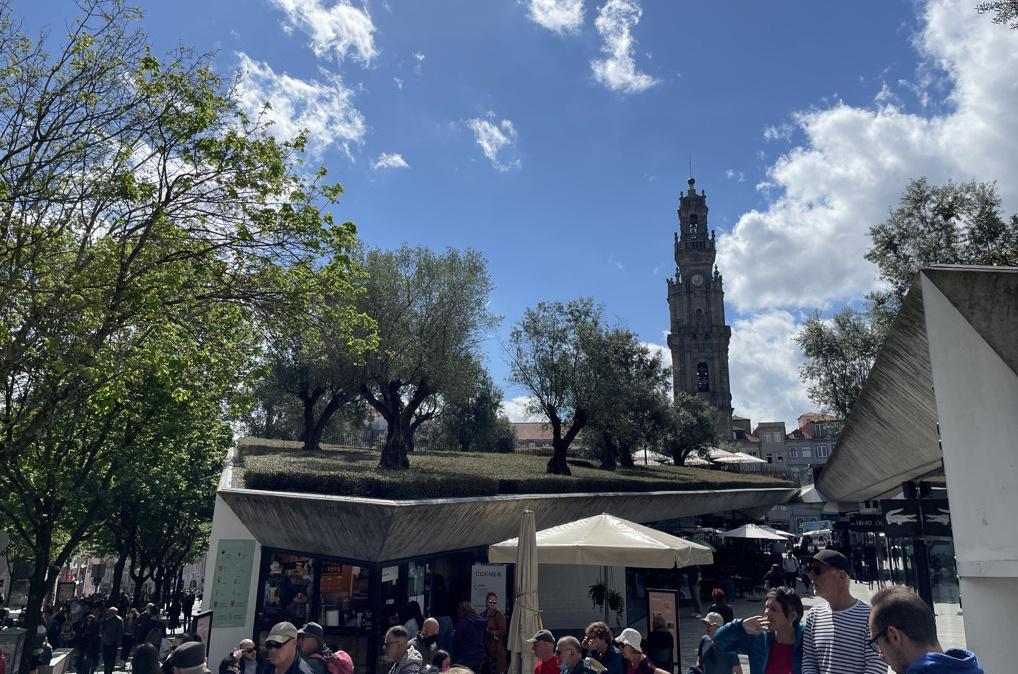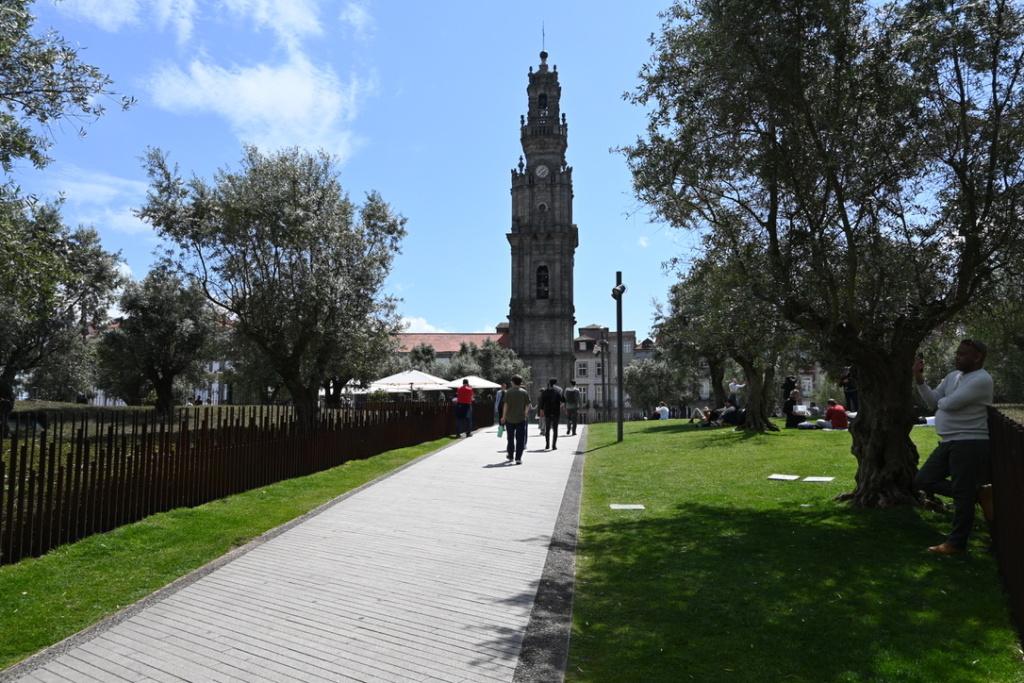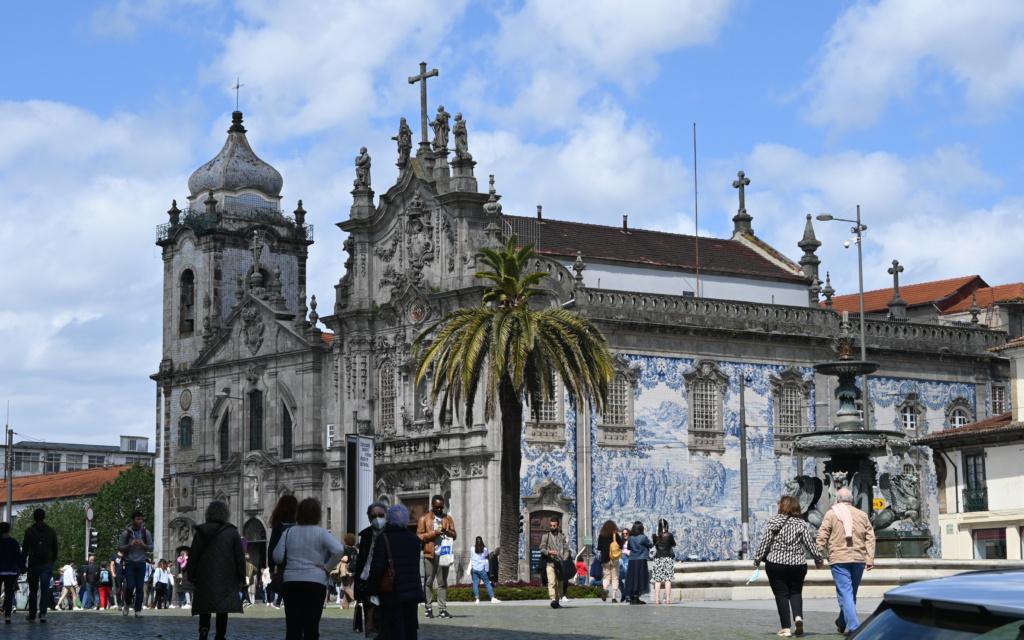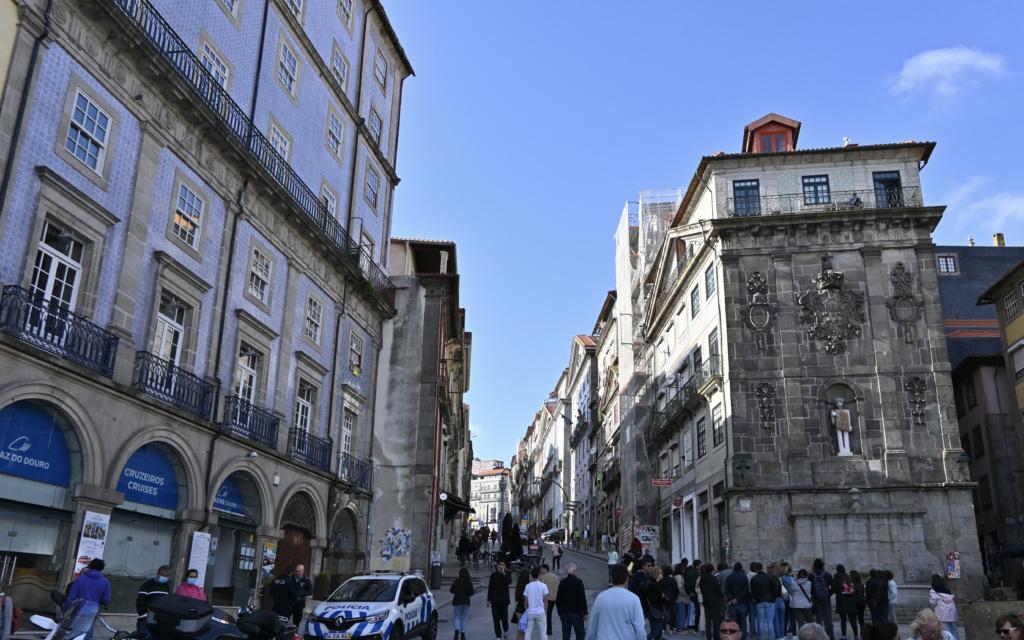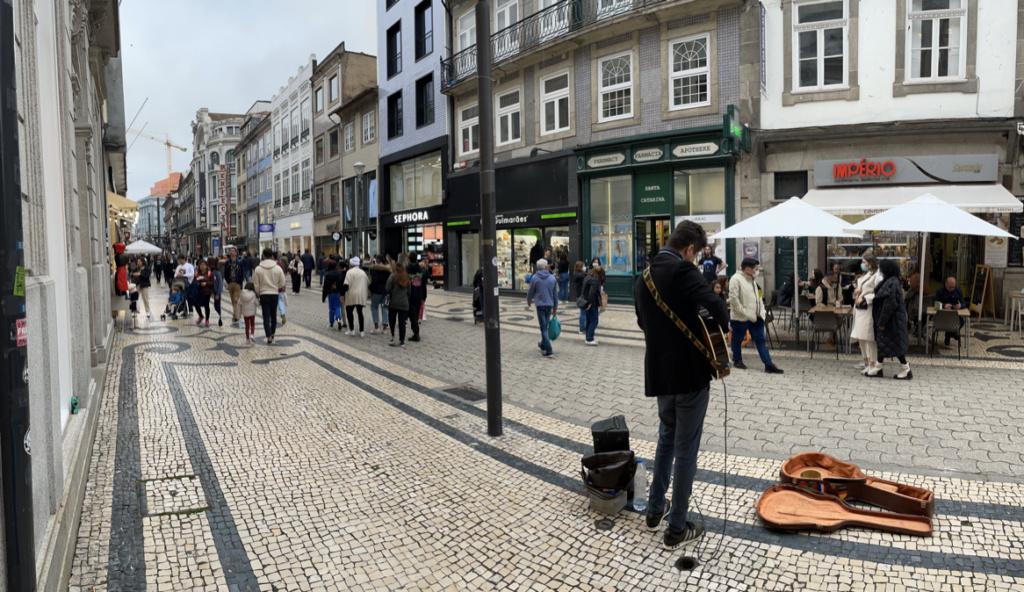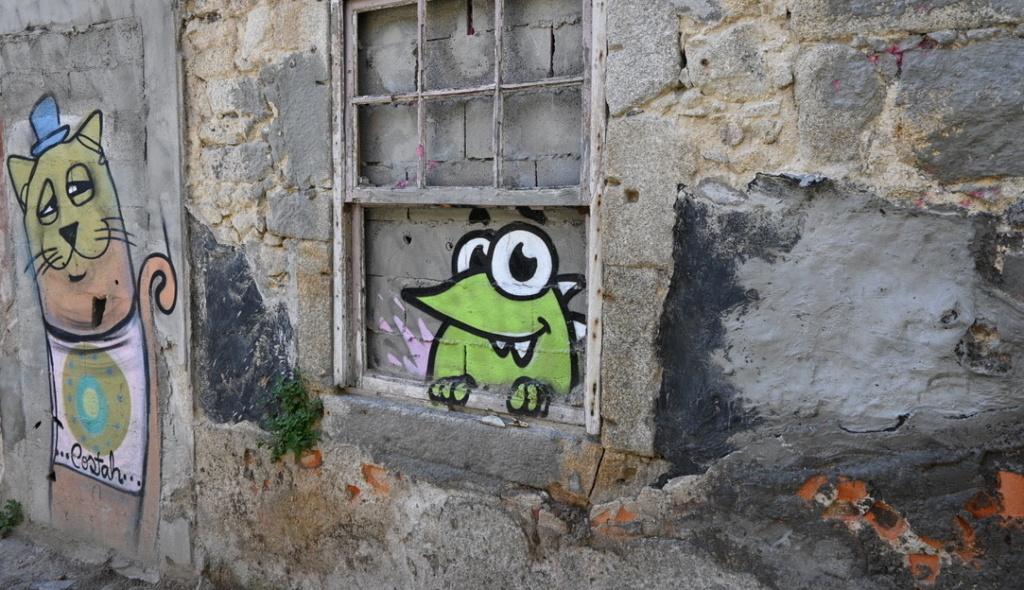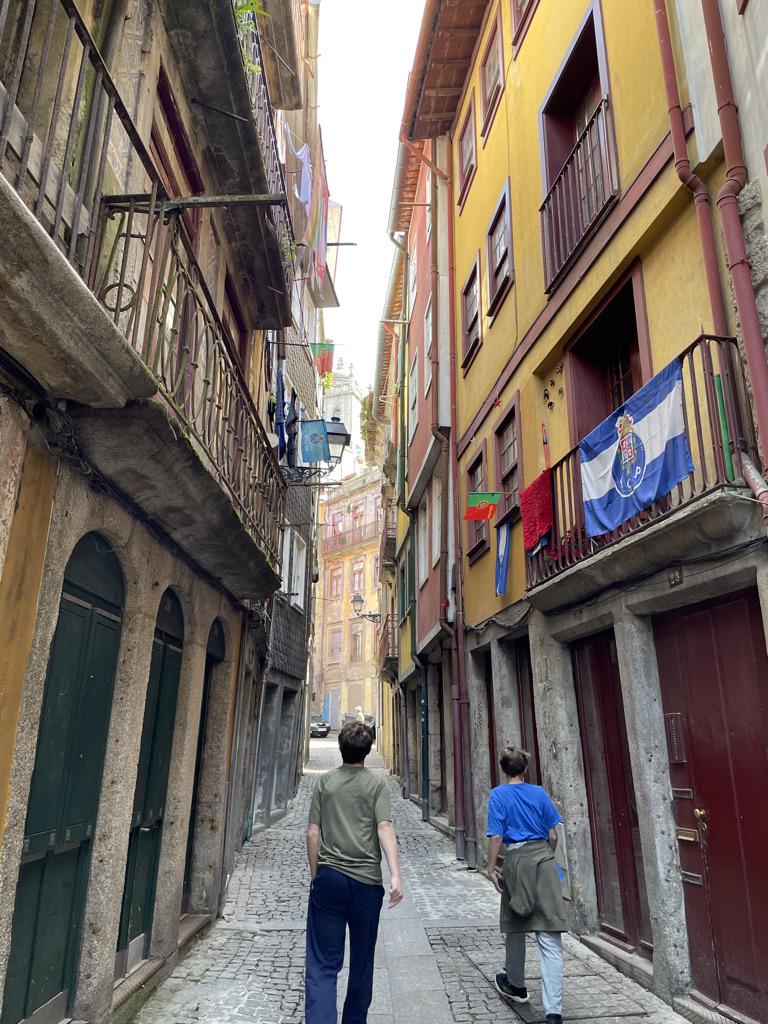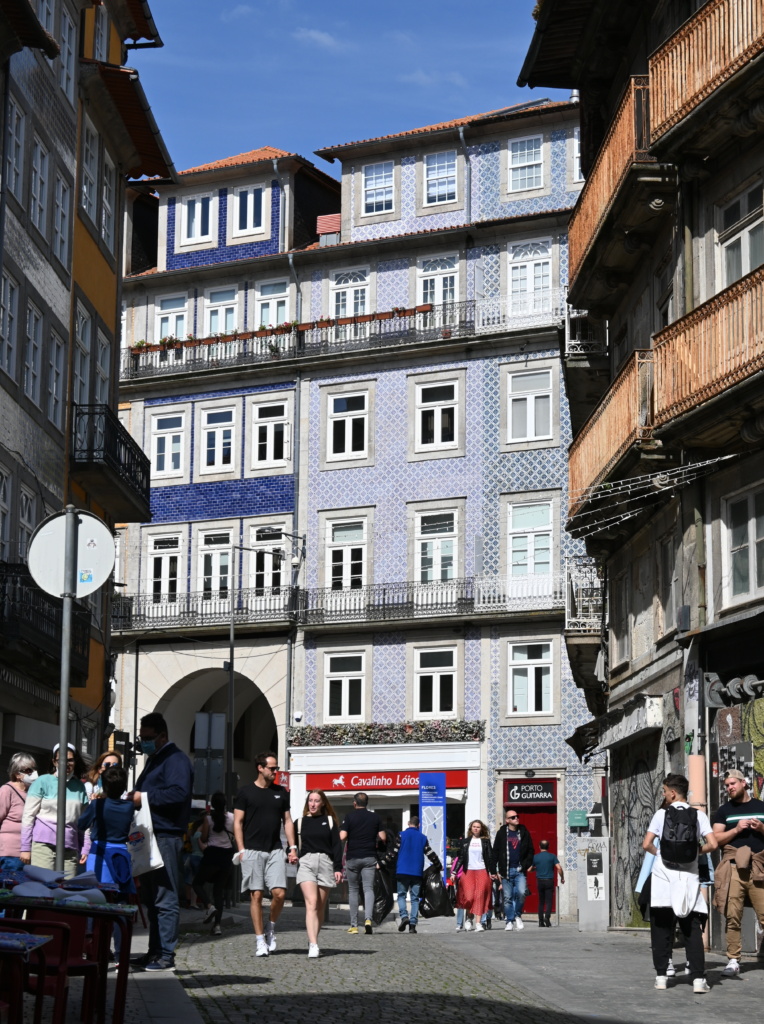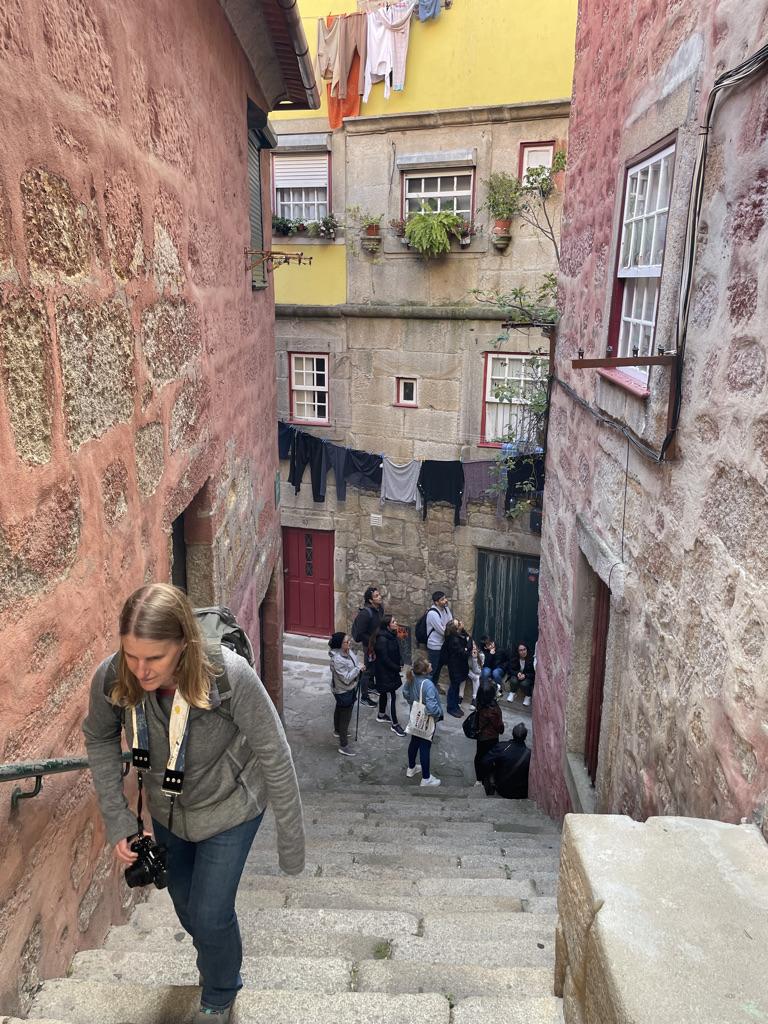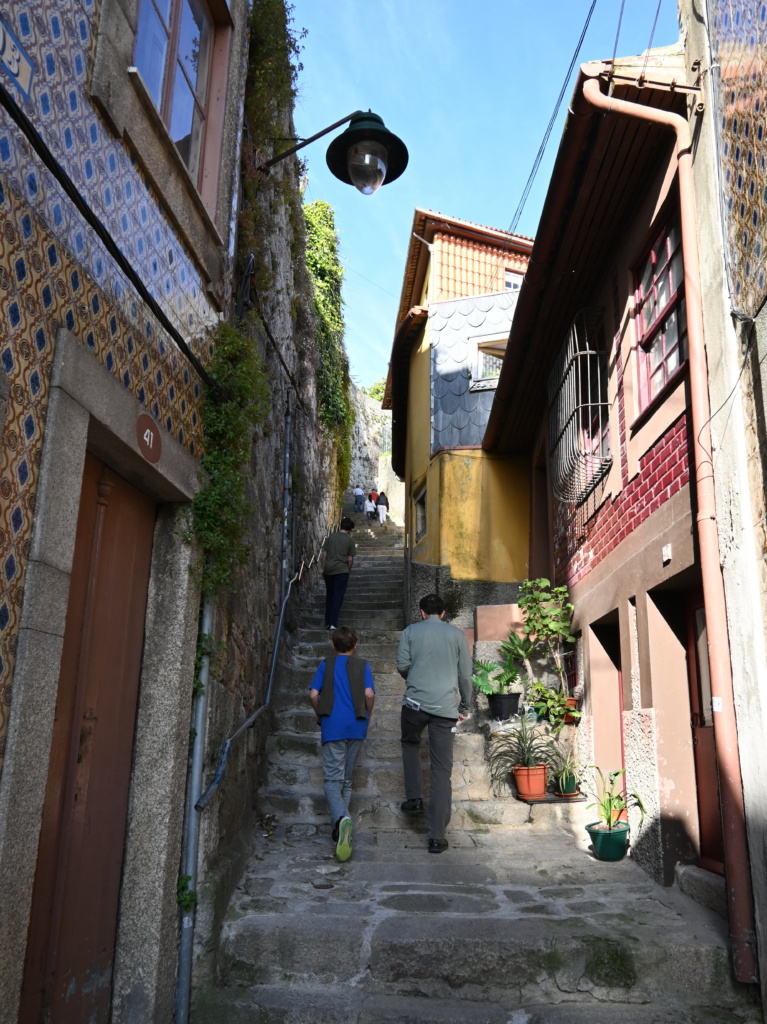Porto was the first stop on our Portuguese adventure. The second largest city in Portugal, Porto is filled with architectural gems, historic landmarks, and a bustling riverfront. We spent 3 nights in Porto and explored the city on foot, wandering the cobblestone streets and climbing the hills from the banks of the Duoro River. Below are some of the highlights of our 1.5 days exploring the city on our own.
Estação de São Bento
Our first introduction to Porto was the São Bento train station, and what an introduction it was. Stepping off the train and onto the platform, you have no idea what is in store for you when you exit to the lobby.
We knew the station was on our must-see list but we were not prepared for the jaw-dropping azulejos that surrounded us when we entered the lobby. More than 20,000 tin-glazed ceramic tiles cover the 4 walls, depicting significant moments in Portugal’s history.
There are three levels of ceramic tiling in the lobby – the top level is in color and the middle and bottom levels are in blue and white. The magnificent tiles were painted by artist Jorge Colaco over a period of more than 10 years.
The top, colorful level displays different modes of transportation throughout Portugal’s history. Starting with scenes of horse-drawn wagons and carriages and ending with the locomotive, the top layer of tiles celebrates the country’s advances in transportation up to the early 1900s when the station was completed.
The blue and white tiles in the middle and bottom levels depict significant events from Portugal’s history. From battles to weddings, key Portuguese figures and events are drawn in exquisite detail on the walls of the vestibule.
The São Bento train station is easy to visit – and free! Just walk in and immerse yourself in the stunning history and art of Portugal.
Igreja de Santo Ildefonso
In addition to the stunning vestibule of the Sao Bento station, Jorge Colaco’s work can be seen throughout the city, including on the exterior of the Church of Saint Ildefonso. Over 11,000 blue and white azulejos cover the facade of the church located near Batalha Square, just up the street from the train station.
The Baroque-style Catholic church was completed in 1739 and Colaco’s tiles were added in 1932 . The tiles illustrate stories from the gospel, as well as scenes from Saint Ildefonso’s life. Although we only explored the outside of the church, visitors can go inside and admire the altarpiece, stained glass windows, canvas paintings, and pipe organ.
McDonald’s
Yes, you read that right. The McDonald’s in Porto is actually a famous city landmark. Known as the most beautiful McDonald’s in the world, the fast food restaurant occupies the former space of a famous 1930s era coffee shop, Cafe Imperial. The architectural features that give this McDonald’s its claim to fame are all hold-overs from the coffee shop, including the giant bronze eagle statue looming over the entrance. Inside, visitors are wowed by the friezes, crystal chandeliers, and stained glass window.
I have to say that this felt like a waste of time to me and I was glad that we hadn’t gone out of our way to see it. We happened to be walking by and had read about it so we decided to just pop our heads in. It was interesting to see a modern, fully-functioning McDonald’s against this backdrop but I really didn’t see what all the hype was about.
Livraria Lello
From the most beautiful McDonald’s in the world, we headed to the most beautiful bookstore in the world, Livraria Lello. And this one did not disappoint. Read about our visit to the famous bookstore in more detail here.
Igreja and Torre dos Clérigos
Igreja and Torre dos Clérigos is about a block away from Livraria Lello so we combined our wait times by buying the next available timed entrance ticket to the tower and then waiting on line for the bookstore while we also waited for our tower time. This worked really well and made it feel like we weren’t wasting time while we stood in line for the bookstore. Read more about our tour of the Torre dos Clérigos here.
Sé do Porto
Porto Cathedral is one of the city’s oldest buildings. This Roman Catholic church is seeped in history. Built in the 12th century by Portugal’s first king, the cathedral was the site of Dom Joao I’s 1387 wedding to Philippa of Lancaster, as well as the baptism of their son Prince Henry the Navigator 7 years later.
Perched on top of a hill, the cathedral requires some effort to reach but it is worth it for both the church itself and the views of the city from its square. Beware of the winds though – it was surprisingly difficult to walk across the square and lots of people were losing their hats and papers to the wind.
Having just visited the Clerigos Church, we opted not to go inside, but the church and its cloisters are open to the public. There is a 3 euro fee to enter the cloisters but the cathedral itself is free. I think I would have enjoyed the cloisters, with its stone archways and beautiful azulejos tiles, but the boys were excited to get down to the riverfront so after meandering in the square for a while enjoying the scenery, we continued on.
Ponte de Dom Luis I and Cais da Ribeira
From the top of the historic center of Porto, we wound our way down narrow streets and cobblestone alleys on our way to the river, where we crossed Ponte de Dom Luis I to admire Porto from the other side of the Duoro. Read more about our riverside wanderings here.
The Streets of Porto
And in a city like Porto, the streets themselves are as much a destination as the sites they are taking you to. We loved just wandering around, feeling the vibe of the city. From the lively Rua Santa Catarina, where we ate a few meals (and I shopped for my lost luggage replacement items), to roof top parks to monuments, churches and random street art, the city of Porto is such an amazing place to explore. We walked everywhere during our 3 days there, which really exposed us to so much more of the city than if we had used public transportation. It was a great way to immerse ourselves in the city and we absolutely loved the architecture, history, culture, and people of Porto that we experienced along the way.
